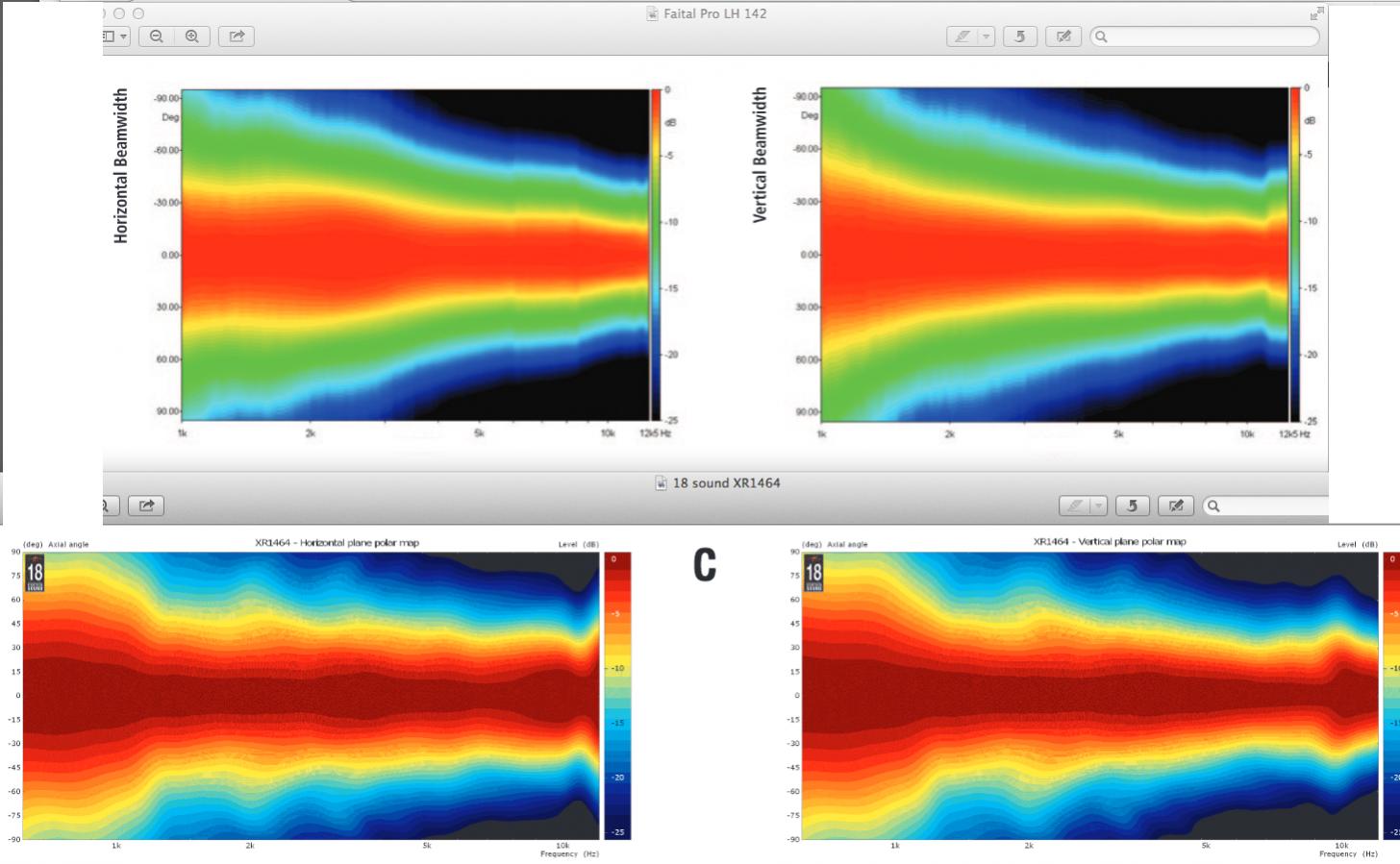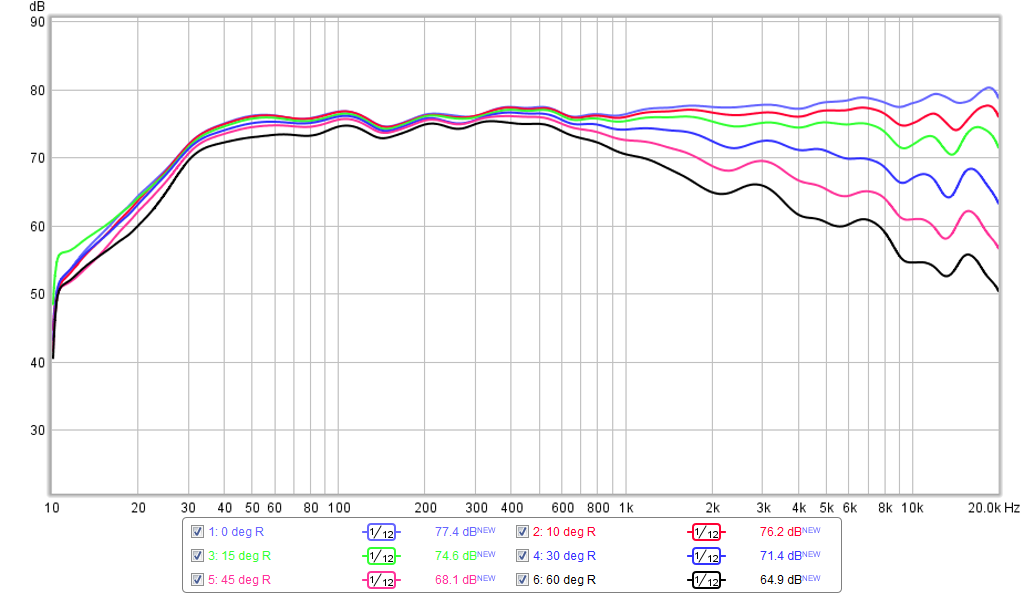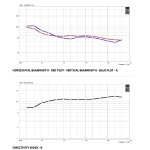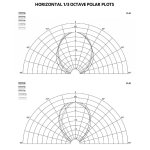haters are everywhere.
You are right!
And as Zilch said: "more data, less wank".
This thread is full of data thanks to Xrk971, Bushmeister and others. Thanks to them! Thanks to T.Danley to let others 'play' with his design and giving key to understand them.
It resembles a very ordinary behavior on the Russian forums 😀.Grasso789, somehow I think you're on the wrong thread..
If you don't like it? Fine... but why make so much noise and claims about your concept on this thread..
If you are that convinced about your own little concept, why dismiss other well though out concepts? That just seems wrong to me.
Grasso789, aren't you from Russia? 🙂
Last edited:
^^...I'll add my agreement about my disagrement with Grasso. I'm surprised of such a degree of (apparent) arogancy. You seems (but it's only a feeling) offended by the interest of synergy project. It's not a competition. There's a lot of aspect to take account of. It's all about trade off.
Some wants perfect reproduction, and goes with high feedback composite amp, some prefers tube sound [effect 🙂 ].
Some wants omni-directional sound, with envelopping effect, adding his own room resonnance profil to the resonances yet recorded from music. So there's different way to do that. It seems that the way you are defending one in your own thread.
Others don't want to have to deal so much with room resonnance effect, much like with headphone. Here synergy is partially about that at home.
Moreover, with horn, we trade directivity in mid/high for efficiency, and so gain from speakers working in more linear range with lower cone displacement as said X.
You only share with it project the point source aspect, and good impulse reproduction. That should be said as X-Y axis of the problems, whereas there's others dimensions to take account. You've totally missed the point of interest for high directivity at home.
I should add that wesayso 's array would be a better competitor for you, hard to beat with such a work in dsp aspects ^^
Some wants perfect reproduction, and goes with high feedback composite amp, some prefers tube sound [effect 🙂 ].
Some wants omni-directional sound, with envelopping effect, adding his own room resonnance profil to the resonances yet recorded from music. So there's different way to do that. It seems that the way you are defending one in your own thread.
Others don't want to have to deal so much with room resonnance effect, much like with headphone. Here synergy is partially about that at home.
Moreover, with horn, we trade directivity in mid/high for efficiency, and so gain from speakers working in more linear range with lower cone displacement as said X.
You only share with it project the point source aspect, and good impulse reproduction. That should be said as X-Y axis of the problems, whereas there's others dimensions to take account. You've totally missed the point of interest for high directivity at home.
I should add that wesayso 's array would be a better competitor for you, hard to beat with such a work in dsp aspects ^^
Last edited:
My first contribution in this thread was to point out that the horns you use have a quite uneven beamwidth, as they are not conical, like the one in the original Synergy is, but more or less exponential. And a beamwidth which i consider too narrow in the trebles: I do not believe that there are so many people living in full nude rooms listening to music only while being glued into a certain fauteuil which is glued to the floor, to justify 128 pages on a serious technical forum. You buried this in order to add 3 more pages.
Then i pointed out that that stuff by a certain US-American sound tech guy (Hello!) is confuse. Not only technically but also in terms of social rules, as it is patented yet somehow digged by DIY folks. So what?
Then i pointed out that that stuff by a certain US-American sound tech guy (Hello!) is confuse. Not only technically but also in terms of social rules, as it is patented yet somehow digged by DIY folks. So what?
=> "Diyaudio projects by fanatics, for fanatics" ^^to justify 128 pages on a serious technical forum.
He's certainly ruffled plenty of feathers in 4 days of posting. You can see why diy-hifi-forum.de ran him out. (see http://www.diyaudio.com/forums/mult...-way-loudspeakers-done-right.html#post4645770) .
🙂
🙂
Hi X!
Talking about the unusually favourable properties of the design, any news on your variation on the XBush? Did you ever get the phase sorted?
I have taken a hiatus from speaker building for a while to let the dust settle. I am busy designing some new multiway point source speakers in Akabak land at the moment. Also working on making class AB and class A amps from parts and pieces. Just made a couple of nice 50w class AB amps and have to say I like how authoritative their bass is. Finished my first class A amp last night and listening to that. Being able to measure their effect on a speaker and comparing with class D, class AB, class A and making sound clips for a compare thread may be on my list of to do. Very interesting how an amp imparts a flavor to the music. It's audible and measurable.
I think for me to get my xBush working will require a bigger box that lets the woofers breathe better and I may have to enlarge my injection holes.
You do use direct radiators, because at least one way of your loudspeaker constructs has its ports too far on the outskirts of the horn, close to the mouth, to still work as a horn.
Good drivers do not distort much, but an air port too small always does...
...The Synergy uses effectively direct radiation in the bass. A port makes no horn. For a horn, the port must be located at the throat.
Any symmetrical arrangement such as D'Apollito would obtain a two-dimensional source position equal to the tweeter's. A smaller horn surrounded by two to eight direct-radiating drivers is all you need for modular scalable PA applications. It can become stacked, if the construction is right. Welcome to working stuff.
Uli
1) The bass on the "xbush" configuration will get a little loading if the straight-sided horn section, or perhaps a portion of the tractrix mouth, loads the driver(s), thus still reducing cone motion significantly. Look closely at the acoustic resistance curves for tractrix and "conical" profiles at ka < 1. A lot of people miss this point--that even seemingly small amounts of horn loading significantly reduce modulation distortion disproportionately. So there is horn loading of the woofers, just not anything like 100%. It sounds a lot better than ported (reflex) loading, I can tell you, first hand.
2) The comments about horn port sizes are basically right, except if you decide to de-rate the loudspeaker to play at less than 120 dB at one metre (as perhaps the authors have done in order to achieve a bookshelf-sized unit) the issue becomes moot. The ports work at 100 dB, etc. I dare say that the current design here probably works as well as any bookshelf-sized direct radiator loudspeaker in terms of overall SQ--in fact much better. Remember that the human hearing system is based on logarithmic scales for loudness (SPL) and frequency, so linear scale arguments are not really applicable.
The logical fallacy of "all or nothing" (black or white) doesn't do well in loudspeaker design, where multiple compromises must be made in coordination.
3) Horns do not have to be ported at the throat. They have to load the drivers with transformer-like resistance over that of direct radiating mode.
4) Most people don't get the difference between direct radiators vs. horn-loaded because they don't understand why horn-loaded loudspeakers sound better. The difference is not lower harmonic distortion, but significantly lower bass modulation distortion and compression (including mass effects). HD is easy to measure and is an indicator of the levels of modulation distortion sidebands, but only to the extent that the woofer cones move to produce MD. Direct radiators lose on this measure by about five-to-one in terms of cone motion to produce the same SPL output. The last time I looked, nonlinear distortion in real drivers (woofers in particular) isn't a linear function of cone motion. Any direct radiating woofer will suffer from 10-25 dB higher levels of FMD+AMD than if that same driver is horn loaded to produce the same SPL output above fc.
5) My ears know the difference between low bass MD and high bass MD. I'm actually amazed that others can't immediately hear the difference, i.e., many have apparently become acclimatized to the sound of bass modulation distortion. Cleanness of sound quality is one of the typical descriptors used to describe the difference.
This isn't PA -- it's home hi-fi, if I get the application correctly.
I find it useful to discuss hard points head-on and not to shy away or argue based on perceived fiat position away from the challenge, but only if all arguing sides are willing to act in the spirit of dialogue...instead of debate. The difference is the willingness to learn instead of merely "winning".
Chris
Last edited:
My first contribution in this thread was to point out that the horns you use have a quite uneven beamwidth,
Really??? They look OK to me. 🙂

My first contribution in this thread was to point out that the horns you use have a quite uneven beamwidth, as they are not conical, like the one in the original Synergy is, but more or less exponential. And a beamwidth which i consider too narrow in the trebles: I do not believe that there are so many people living in full nude rooms listening to music only while being glued into a certain fauteuil which is glued to the floor, to justify 128 pages on a serious technical forum. You buried this in order to add 3 more pages.
Then i pointed out that that stuff by a certain US-American sound tech guy (Hello!) is confuse. Not only technically but also in terms of social rules, as it is patented yet somehow digged by DIY folks. So what?
It's not all for home audio - mixing and mastering studios where the engineer sits in a fixed spot at the workstation/console can really benefit from narrow directivity but flat and smooth reaponse, low distortion, accurate time coherency and smooth polar variation without lobing behavior.
Not sure where all the animosity for a point source FAST concepts comes from. We never claim the bass is horn loaded with horn gain. It's certainly not a direct radiator. Anytime a cone goes into a chamber connected by a narrow duct to the outside world it stops being a direct radiator. It's by combining the woofer output into a larger duct (the waveguide) that it becomes a virtual point source. This will be free from vertical as well as horizontal polar lobe variations like a D'Appolito would be. Let's not forget the added benefit of reducing. The front baffle size relative to having two direct radiators.
Anyhow - if you feel that this concept is a waste of time - that's your opinion and your choice. It's a free forum and obviously it's an opinion that is of the minority given the interest.
I just cleaned up the First post to point to Bushmeister's summary and also gave a quick visual summary of the key features and results on the front page as well.
I just cleaned up the First post to point to Bushmeister's summary and also gave a quick visual summary of the key features and results on the front page as well.
Excellent first post summary and comparison of our two variations.
I love the high-tech/low-tech differences - just shows there are many ways to achieve the same thing.
I think with your 3D printed parts you could definitely get a better result than mine with a new box and larger ports.
But I am really intrigued by your earlier post regarding amplifier sounds and measurable differences - looking forward to seeing your write-up!
Keep it up X - you are a fantastic contributor to this site - after all your experiments are the inspiration behind this whole thread!
Thanks for all the hard work chaps. This design is on many peoples radar. Don't worry about the hater, he reminds me of my grandma, no one liked her either. Read his second post on this forum. Hilarious.
Sent from my GT-I8200 using Tapatalk
Sent from my GT-I8200 using Tapatalk
Yes, this measures like a good monitor. But the following horn taken from the beginning of this thread radiates more narrowly:Really??? They look OK to me. 🙂


For me there are horns, which are acoustic transformers, and direct radiators. What is no horn, is a direct radiator, even if the wave first travels thru a transmissionline before entering free space. About lobing: Your designs use two woofers with each at least one port. Each port is a sound source. So you have two sound sources outputting the same frequency. So you get lobing, if the distance between both ports is greater than lambda/2. About baffle size: The best baffle is the infinite one. Less than that, and we get diffractions. On the other hand the loudspeaker is often supposed to be a piece of furniture hence must have finite dimensions. One of my principles is, that recreational loudspeakers shall not be concave like horns but convex like CBTs. About FAST: I have no grump with that, quite the opposite. I have a little grump with FIR, which i consider faking.971 said:Not sure where all the animosity for a point source FAST concepts comes from. We never claim the bass is horn loaded with horn gain. It's certainly not a direct radiator. Anytime a cone goes into a chamber connected by a narrow duct to the outside world it stops being a direct radiator. It's by combining the woofer output into a larger duct (the waveguide) that it becomes a virtual point source. This will be free from vertical as well as horizontal polar lobe variations like a D'Appolito would be. Let's not forget the added benefit of reducing. The front baffle size relative to having two direct radiators.
My last polar directivity measurement with the bass injection holes was this:

Seems close to the contour plot above for LTH142 (60deg x 50deg horn). The holes added some wiggles but overall, very close to pristine horn. I am using in vertical orientation, so design goal was only 50 deg full angle beamwidth - or somewhere between the green and blue lines.

Seems close to the contour plot above for LTH142 (60deg x 50deg horn). The holes added some wiggles but overall, very close to pristine horn. I am using in vertical orientation, so design goal was only 50 deg full angle beamwidth - or somewhere between the green and blue lines.
Last edited:
Grasso789,
When you don't accept documented data, have hard to follow why you use your energy and time here instead of use those resources on building what concept and compromises yourself believe in and then show data for that.
Seems this thread has created a same monster as if market could offer one 11 incher full range driver with nice polar and HF reach up to 30kHz, whats not to love about this except its technical complicated build with high numbers of pieces to bond together.
Regarding vertical lobe compared spacing on traditional baffles, can't you see it's so clever having woofer ports inside horn for one reason and that is ctc no matter woofer verse woofer or woofers verse tweeter with a low XO point that use of a fullranger as tweeter offer will bring all three drivers inside 1/4 wave rule and thereby radiate as one driver.
When you don't accept documented data, have hard to follow why you use your energy and time here instead of use those resources on building what concept and compromises yourself believe in and then show data for that.
Seems this thread has created a same monster as if market could offer one 11 incher full range driver with nice polar and HF reach up to 30kHz, whats not to love about this except its technical complicated build with high numbers of pieces to bond together.
Regarding vertical lobe compared spacing on traditional baffles, can't you see it's so clever having woofer ports inside horn for one reason and that is ctc no matter woofer verse woofer or woofers verse tweeter with a low XO point that use of a fullranger as tweeter offer will bring all three drivers inside 1/4 wave rule and thereby radiate as one driver.
Last edited:
Does the Akabak's X-Bush script is somewhere ? maybe i searched too fast, but didn't find it. I would be really interested in seeing Akabak phase and impulse to see how my project's sim compare to this "ideal".
Ya, i get the thot: Horn must be big, but woofers must sit close to tweeter, so woofers inside horn.it's so clever having woofer ports inside horn ... woofers verse tweeter with a low XO point that use of a fullranger as tweeter offer will bring all three drivers inside 1/4 wave rule and thereby radiate as one driver.
But then, why small woofer ports? Why not let the diaphragms of the woofers form the outskirts of the horn, for instance ten small woofers circling around a circular horn? O.k., most woofer diaphragms are not straight or convex but concave, causing errors in the horn shape. But does air blowing out of small ports orthogonally to radiation direction of trebles not cause modulation of trebles? You know the effect of wind blowing away sound.
- Home
- Loudspeakers
- Multi-Way
- A Bookshelf Multi-Way Point-Source Horn


